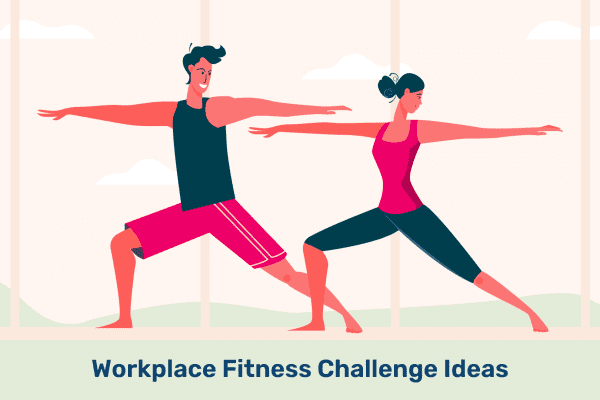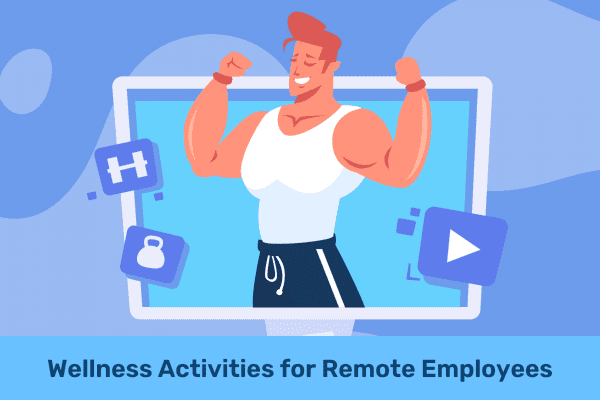Introduction
Imagine your team not just around the conference table, but out there, bonding over a game of tug-of-war or a group hike. This isn’t just a fun break from the norm; it’s a powerful tool to forge stronger connections in your team. Physical team building activities bring an exciting twist to traditional team dynamics, turning colleagues into team players in the truest sense.
Why does this matter? Consider the insights from a study published in Harvard Business Review: teams with a strong sense of belonging see a 56% increase in job performance, and there’s a 50% drop in turnover risk and 75% fewer sick days. These aren’t just numbers; they’re a testament to the power of a united team.
Dive into this blog for 51 physical team building activities that are more than just exercises – they’re experiences that will transform how your team works together. These aren’t your typical office activities; they’re dynamic, they’re engaging, and they’re designed to bring your team closer than ever before. From challenging outdoor escapades to energizing group competitions, get ready to take team building to a whole new level.
Get-to-Know-You IceBreakers

Ice breakers are a fantastic way to start any team building session. They help people relax, break down social barriers, and create a sense of familiarity. Here are some engaging get-to-know-you icebreaker activities that are perfect for initiating teamwork and camaraderie:
“Two Truths and a Lie” Game:
Each team member presents three statements about themselves: two truths and one lie. The rest of the team guesses which statement is the lie, sparking conversation and laughter.
“Life Timeline” Activity:
Participants draw a simple timeline of their life and mark significant moments, both personal and professional. Sharing these timelines in small groups helps team members understand each other’s backgrounds and experiences.
“Human Bingo”:
Create bingo cards with various traits, experiences, or fun facts. Team members mingle to find people who match the descriptions on their cards, which encourages interaction and discovery of commonalities.
“Office Trivia” Challenge:
Develop a trivia quiz about the company, its history, or its employees. This activity is not only fun but also educative, especially for newer team members.
“Photo Introduction” Round:
Ask everyone to bring a photo that is significant to them and share the story behind it with the group. This activity allows for personal sharing and deeper connection.
These ice breakers are designed to warm up the group, create a sense of comfort, and build a foundation for more complex team-building activities to follow. They are particularly effective at the start of team-building sessions, helping to create an open and friendly atmosphere.
Outdoor Adventure Activities

Outdoor activities are excellent for team building, combining the benefits of fresh air and natural settings with physical challenges and collaborative tasks. Here are seven outdoor adventure activities that can bring energy, excitement, and a sense of accomplishment to your team:
Team Obstacle Course:
Design a course with various physical challenges that require teamwork to navigate. This activity tests physical endurance and strategic planning while fostering a spirit of cooperation.
Adventure Race:
Organize a multi-discipline race that might include elements like running, cycling, and kayaking. Teams must work together to strategize their approach, fostering unity and collective problem-solving.
Outdoor Survival Game:
Simulate a survival scenario where teams must work together to ‘survive’ by building shelters, sourcing ‘food,’ or navigating to a safe point. This encourages creative thinking and resourcefulness.
Geocaching Treasure Hunt:
Utilize GPS technology for a modern-day treasure hunt. Teams use coordinates to find hidden items, combining physical activity with mental challenges.
Group Hiking Expedition:
Plan a scenic hike that suits all fitness levels. This less competitive activity allows for informal bonding and conversation in a relaxed, natural setting.
Canoeing or Rafting Trip:
Water-based activities like canoeing or rafting require teams to synchronize their efforts to navigate courses or rapids, emphasizing the importance of clear communication and coordination.
Outdoor Photography Challenge:
Equip teams with cameras and set them off on a nature photography mission. This can be a creative and relaxing way to explore the outdoors, encouraging teams to collaborate on capturing the best shots.
Each of these outdoor activities is designed to push teams out of their regular work environment and comfort zones, promoting growth, collaboration, and a deeper connection to each other and the natural world. They provide unique opportunities for team members to interact, build trust, and create lasting memories together.
Sports and Competitive Games
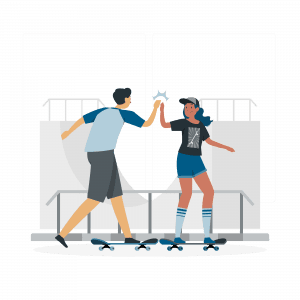
Incorporating sports and competitive games into team building can significantly enhance team spirit and cooperation. These activities promote healthy competition, physical fitness, and fun, all while promoting teamwork. Here are seven sports-based team building activities:
Office Olympics:
Create a series of light-hearted, competitive games based on traditional Olympic sports, but with a fun office twist. Events can range from chair racing to synchronized desk-chair swimming, fostering laughter and team spirit.
Team Marathon/Relay Race:
Organize a mini-marathon or a relay race where team members have to work together to complete the course. This activity not only promotes physical fitness but also requires strategic planning and teamwork.
Volleyball Tournament:
Set up a volleyball match, which can be played indoors or at the beach. It’s a great team sport that emphasizes cooperation and coordination.
Soccer Match:
Organize a friendly soccer game. It’s a globally beloved sport that encourages teamwork and strategy, and it’s easy to scale according to skill level.
Basketball Shootout:
Host a basketball shooting contest. It can be structured as a friendly competition and is an excellent way to engage team members in a fun and active way.
Ultimate Frisbee:
This game is a mix of football, soccer, and basketball, yet less contact-intensive. It’s great for building team dynamics and can be played by people of all fitness levels.
Table Tennis Tournament:
Ideal for indoor spaces, table tennis (or ping pong) can be a fantastic way to engage teams in a fast-paced and skillful game that requires focus and agility.
Each of these sports activities is designed to encourage healthy competition while reinforcing the importance of teamwork, communication, and mutual support. They can be great ice breakers and help build lasting relationships among team members, all while keeping them active and engaged.
Brain and Brawn Challenges
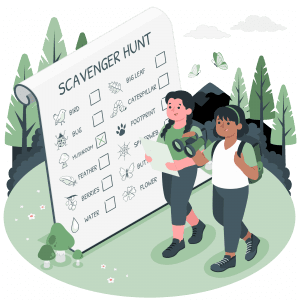
Brain and brawn challenges combine mental puzzles with physical tasks, creating a unique team-building experience that tests both mind and body. These activities encourage teams to collaborate, think critically, and use their physical skills to solve challenges. Here are seven brain and brawn team building activities:
The Escape Challenge:
Set up an outdoor escape room-style activity where teams solve puzzles and find clues to ‘escape’ a designated area. This activity requires both mental agility and physical effort to complete tasks.
Puzzle Race:
Design a race where teams must complete physical challenges to receive pieces of a puzzle. The final task is to assemble the puzzle, requiring both physical exertion and problem-solving skills.
Scavenger Hunt with Riddles:
Create a scavenger hunt that involves solving riddles or puzzles to find the next location or item. This activity combines physical movement with intellectual challenges.
Construction Challenge:
Teams are given materials to construct a specific item, such as a bridge or tower. They must plan, design, and build the structure, testing their engineering skills and physical coordination.
Survivor Skills Challenge:
Teams compete in a series of survival-themed tasks, such as building a shelter, starting a fire, or navigating with a map and compass. These tasks require both physical skills and strategic thinking.
Blindfolded Obstacle Course:
Team members navigate an obstacle course blindfolded, guided only by the verbal instructions of their teammates. This challenge relies on trust, communication, and physical agility.
Mind and Muscle Quiz Relay:
Combine a physical relay race with trivia questions. Teams must complete a physical task before answering a quiz question, balancing physical speed with mental prowess.
These brain and brawn challenges are effective for developing teamwork, as they require teams to use diverse skills and work closely together to succeed. They are especially beneficial for teams that thrive on creativity, problem-solving, and physical activity, fostering a sense of achievement and unity.
Also Read: Brain Breaks for Adults
Rhythm and Dance-Based Activities

Rhythm and dance-based activities are excellent for team building, combining physical movement with creativity and fun. These activities encourage teams to sync up, break down barriers, and express themselves in a lively, energizing environment. Here are five rhythm and dance-based team building activities:
Group Dance Challenge:
Teach the team a simple dance routine, or have them create their own. This activity requires coordination and encourages team members to work together rhythmically and expressively.
Drum Circle:
Organize a drum circle where team members play different percussion instruments. This activity is not only about creating music together but also about listening to each other and collaborating to maintain a harmonious rhythm.
Lip Sync Battle:
Host a friendly lip sync competition where teams perform songs while miming the lyrics. It’s a great way for teams to bond over music and performance, encouraging creativity and a bit of healthy competition.
Flash Mob Preparation:
Plan and execute a flash mob. This involves secretly rehearsing a dance routine and performing it unexpectedly in a public space. It’s an exciting way to build teamwork and surprise other colleagues or the public.
Synchronized Movement Workshop:
Engage the team in a workshop where they have to create a series of synchronized movements or human sculptures. This activity challenges teams to communicate non-verbally and work in unison.
These rhythm and dance-based activities are effective in breaking the usual routine, providing a platform for teams to connect in a fun and dynamic way. They help in building trust, improving communication, and fostering a sense of unity, all while providing an opportunity for exercise and laughter.
Strength and Endurance Challenges
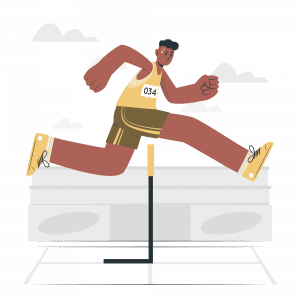
Strength and endurance challenges are excellent for testing and building a team’s physical capabilities, resilience, and ability to support one another under pressure. These activities can be a great way to encourage team spirit and a sense of achievement. Here are four strength and endurance team building activities:
Tug-of-War:
A classic test of strength and teamwork, tug-of-war requires teams to work in unison, using their collective strength to outmatch the opposing team. It’s a simple yet effective activity for building camaraderie and competitive spirit.
Team Plank Challenge:
Hold a plank challenge where team members must maintain a plank position for as long as possible. This can be made more collaborative by having teams hold the plank in a circle or interconnected pattern, relying on each other for support.
Relay Races with a Twist:
Set up a series of relay races that include different physical tasks like running, crawling, and balancing. Teams must strategize on the best way to complete the course, taking into account each member’s strengths and weaknesses.
Obstacle Course Race:
Design an obstacle course that includes a variety of physical challenges, such as climbing, jumping, and balancing tasks. Teams must navigate the course together, helping each other overcome each obstacle.
These strength and endurance challenges are not only about physical prowess but also about encouraging teams to motivate each other, work cohesively, and push their limits. They help build a sense of trust and reliance among team members, showcasing the importance of collective effort in overcoming challenges.
Trust-Building Physical Exercises

Trust is a fundamental component of any strong team, and engaging in physical exercises that focus on trust-building can significantly enhance team dynamics. These exercises encourage reliance, communication, and vulnerability among team members. Here are four trust-building physical exercises suitable for the workplace:
Trust Fall:
In this classic activity, one person falls backward, trusting their team members to catch them. This exercise requires courage from the faller and commitment from the catchers, reinforcing mutual trust and support.
Blindfolded Obstacle Navigation:
One team member is blindfolded and must navigate an obstacle course with only the verbal guidance of their teammates. This activity strengthens communication skills and builds trust in team members’ instructions.
Partner Walk:
Paired in twos, one team member is blindfolded while the other guides them through a designated area. This exercise helps develop trust in teammates’ ability to guide and protect, fostering a sense of safety and reliance.
Human Knot:
Teams stand in a circle, reach in to grab random hands, and then attempt to untangle themselves without releasing their grip. This exercise requires patience, close physical cooperation, and trust in each other’s decisions to effectively communicate and collaboratively find solutions.
These trust-building exercises are designed to take team members out of their comfort zones and require them to rely on one another in ways they might not in a typical office setting. By completing these exercises, teams can strengthen their trust bonds, leading to improved cooperation and a deeper understanding of each other in their day-to-day work interactions.
Mind-Body Wellness Activities

Mind-body wellness activities are essential for maintaining a balanced and healthy team environment. These activities focus on enhancing both physical health and mental well-being, promoting relaxation, mindfulness, and stress reduction. Here are four mind-body wellness activities suitable for team building:
Group Yoga Sessions:
Organize yoga sessions for the team, either in the office or at a nearby park. Yoga helps in reducing stress, improving concentration, and enhancing overall physical fitness. A professional instructor can tailor the session to suit all levels of experience.
Guided Meditation and Breathing Exercises:
Meditation and controlled breathing exercises are powerful tools for managing stress and fostering a calm, focused mindset. Holding guided sessions can help team members learn techniques to enhance their mental clarity and emotional balance.
Tai Chi Workshop:
Tai Chi is a gentle form of exercise known for its health benefits, including stress reduction and improved balance. A workshop can introduce the team to the basics of Tai Chi, promoting relaxation and physical coordination.
Wellness and Health Workshops:
Workshops on topics like nutrition, sleep hygiene, or mental health awareness can be highly beneficial. These sessions can provide valuable information and practical tips on maintaining a healthy lifestyle, both in and out of the workplace.
Incorporating these mind-body wellness activities into your team building strategy can have a profound impact on the overall health and productivity of the team. They encourage a holistic approach to wellness, ensuring that team members are not only physically active but also mentally and emotionally supported.
Creative and Constructive Activities

Creative and constructive team building activities encourage innovation, collaboration, and practical skills. These activities can be an enjoyable way for teams to engage in hands-on projects, fostering creativity and problem-solving in a group setting. Here are four creative and constructive activities suitable for team building:
Team Mural Painting:
Assign a large canvas or wall space for the team to create a mural. This collaborative art project allows team members to express themselves creatively while working together on a shared vision. It’s an exercise in coordination and collective creativity.
Build-a-Boat Challenge:
Teams are given materials to build a small boat that can actually float. This activity requires teams to plan, design, and construct a functional boat, testing their engineering and teamwork skills, followed by a fun and competitive race.
Lego Structure Contest:
Provide teams with a set of Lego or building blocks and challenge them to construct a structure based on a specific theme or objective. This task encourages imagination and strategic thinking, as well as collaboration.
Recycled Art Competition:
Challenge teams to create a piece of art or a functional item using only recycled materials. This activity not only promotes creativity and teamwork but also highlights the importance of sustainability and resourcefulness.
Engaging in creative and constructive activities can significantly enhance team dynamics. They provide a platform for team members to showcase their creativity, think outside the box, and work collaboratively on tangible projects. These activities not only result in a sense of accomplishment but also leave teams with a lasting reminder of what they can achieve together.
Fun and Lighthearted Physical Activities
Fun and lighthearted activities are crucial for building a positive team atmosphere. These activities are designed to induce laughter, reduce stress, and encourage team members to connect in a relaxed and enjoyable setting. Here are four activities that are perfect for adding a dose of fun and light-heartedness to your team building:
Water Balloon Fight:
Organize a water balloon fight, especially during warmer weather. This playful activity is not only refreshing but also a great way to encourage team members to let loose and enjoy some carefree fun together.
Three-Legged Race:
Pair up team members for a classic three-legged race. This activity requires coordination and cooperation, all while ensuring plenty of laughs and a competitive spirit.
Inflatable Obstacle Course:
Rent or set up an inflatable obstacle course. Team members can compete individually or in teams. It’s an exciting way to add a physical challenge mixed with a lot of fun.
Giant Jenga or Board Games:
Oversized versions of popular games like Jenga or board games can be a hit. They are perfect for outdoor events and can involve strategic thinking, teamwork, and a lighthearted competitive edge.
Incorporating these fun and lighthearted physical activities into team building helps break down formal barriers, allowing team members to interact more freely and build genuine connections. They are a reminder that work can be enjoyable and that taking time to engage in playful activities can significantly enhance team morale and unity.
Reflection and Cool Down
After engaging in team building activities, it’s important to allocate time for reflection and cool down. This stage allows team members to internalize their experiences, share insights, and relax after physical exertion.
Group Reflection:
Facilitate a discussion where team members share their thoughts on the activities. Encourage them to express what they learned, how they felt, and any challenges they faced. This can deepen understanding and reinforce the lessons learned.
Cool-Down Exercises:
After physical activities, lead the team in gentle cool-down exercises like stretching or breathing exercises. This helps in preventing muscle soreness and brings the group back to a state of calm.
Feedback Session:
Allow team members to provide feedback on the activities. What did they enjoy the most? What could be improved? This feedback is invaluable for planning future team building events.
Relaxation Techniques:
Teach simple relaxation techniques such as guided imagery or progressive muscle relaxation. These methods can be beneficial for managing stress in the workplace.
Celebration of Achievements:
End the session by celebrating the team’s accomplishments. Recognizing individual and group achievements can boost morale and create a sense of shared success.
Implementing Physical Team Building Activities
Effectively integrating physical team building activities requires careful planning and consideration. Here are some tips to ensure these activities are successful and beneficial for everyone involved:
Assess Team Needs:
Understand the dynamics and needs of your team. Choose activities that align with team members’ interests and physical abilities.
Plan for Inclusivity:
Ensure that the activities are accessible to all team members, regardless of their fitness levels or physical abilities. Offer modifications or alternative options when necessary.
Prioritize Safety:
Always consider the safety of the activities. Provide necessary equipment, ensure the environment is safe, and consider having a first aid kit and trained personnel available.
Communicate Clearly:
Provide clear instructions and objectives for each activity. Good communication helps in setting expectations and ensures everyone is on the same page.
Schedule Appropriately:
Choose a suitable time for the activities, considering the team’s workload and energy levels. Avoid scheduling during busy periods or times when team members might be too tired or distracted.
Create a Positive Environment:
Encourage a supportive and non-judgmental atmosphere where everyone feels comfortable participating. The goal is to build the team up, not to create divisions or discomfort.
Regular Integration:
Incorporate team building activities regularly, not just as a one-off event. This helps in maintaining team cohesion and keeping the momentum going.
By following these guidelines, physical team building activities can be a powerful tool in enhancing teamwork, improving communication, and boosting overall team moral.
Conclusion
Exploring the realm of physical team building activities reveals their undeniable impact beyond just physical engagement. These activities serve as a cornerstone for building deeper connections within teams, promoting an environment where collaboration, trust, and mutual support are the norm. The benefits gleaned from such activities resonate well beyond the immediate exhilaration of participation; they lay the groundwork for a more unified and resilient workforce.
In a landscape where the well-being of employees is increasingly becoming a marker of organizational success, embracing these activities becomes more than a choice—it’s a strategic imperative. The journey towards a more connected and healthy workplace is ongoing, and tools like Woliba can be instrumental in this process. By offering a platform that complements physical team-building efforts, Woliba becomes a valuable ally in the quest to unify teams and create a holistic culture of health and well-being.
In essence, the true power of physical team building lies in its ability to transform the collective spirit of a workplace. When teams engage in these activities, they’re not just building strength and endurance; they’re forging a path towards a more collaborative, supportive, and dynamic work environment. By integrating such activities into the workplace, along with leveraging platforms like Woliba, organizations can cultivate a culture that values and uplifts every team member.
Want to create physical team building activities for your organization? Contact us today!

